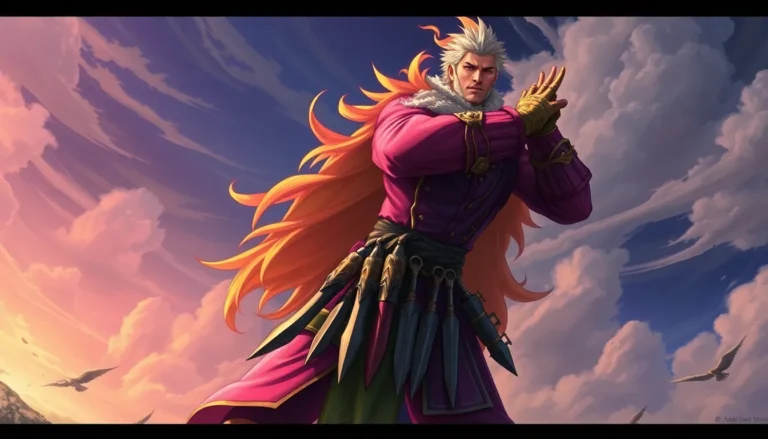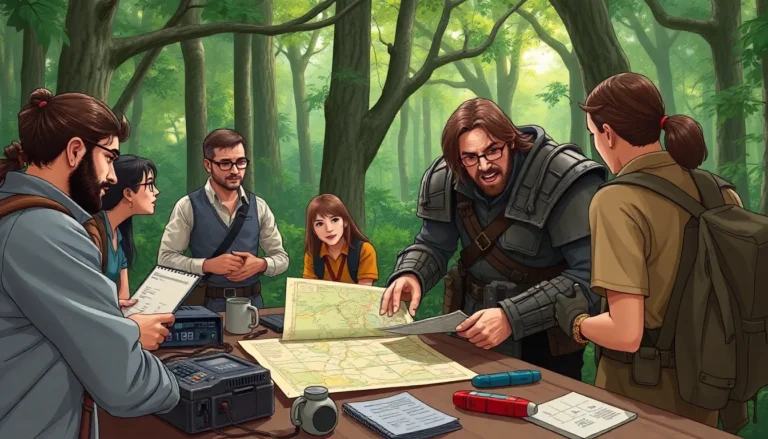Table of Contents
ToggleIn the whimsical world of Final Fantasy, monsters aren’t just obstacles to overcome; they’re colorful characters that add depth and excitement to the adventure. From the adorable Chocobos to the terrifying Behemoths, these creatures range from the charmingly quirky to the downright fearsome. Each encounter promises a unique experience, making players wonder if they should fight, flee, or just offer a snack.
Overview of Final Fantasy Monsters
The Final Fantasy series features an extensive array of monsters, each contributing significantly to the gaming experience. Players encounter a range of creatures that enhance gameplay, offering unique challenges and rewards.
Importance in the Game Series
Monsters serve as pivotal elements throughout the Final Fantasy series. Each creature adds depth to the narrative and enriches players’ journeys. Encountering various enemies challenges players’ strategies and skills. Boss monsters, like Sephiroth, leave lasting impressions with their intricate designs and powerful abilities. Players build their knowledge of each monster’s strengths and weaknesses. This knowledge fosters tactical decision-making, shaping overall success in battles.
Diversity of Creatures
The diversity of monsters in Final Fantasy is immense and noteworthy. Players find everything from whimsical Chocobos to terrifying Behemoths. Each creature possesses distinct traits and behaviors, creating varied combat experiences. Some serve as allies while others act as formidable foes. Players can also encounter legendary beasts, often tied to the game’s lore. Such variety keeps gameplay fresh and engaging, consistently challenging players’ abilities. Each encounter can inspire exploration, as players seek to discover hidden creatures and their unique attributes.
Iconic Final Fantasy Monsters
The Final Fantasy series features a range of memorable monsters, each with unique traits and roles within gameplay. Players encounter a variety of creatures that enhance the gaming experience.
Chocobos
Chocobos are fluffy yellow birds known for their speed and loyalty. These creatures serve as reliable mounts, allowing players to traverse expansive landscapes quickly. Encountering a Chocobo often signals a safe haven, as players can board them for travel. In addition to transportation, players can feed and breed Chocobos, adding a personal touch to the experience. Unique variants, such as the black and gold Chocobos, provide special abilities and enhance gameplay further. Their cheerful presence offers a break from the intensity of battles.
Moogles
Moogles are small, winged creatures recognizable by their white fur and pom-poms atop their heads. These adorable beings often serve as helpers, delivering messages and providing valuable items to players. In various titles, Moogles operate shops or perform in-game services, enhancing player interaction. Players can rely on Moogles to save progress or access unique quests. Their whimsical charm adds a layer of personality to the story, with dialogues that bring humor and warmth. Many fans cherish Moogles for their delightful role across titles within the franchise.
Tonberries
Tonberries are small, green, reptilian creatures infamous for their stealth and deadly attack methods. Each Tonberry carries a lantern and brandishes a knife, making them formidable foes in combat. Their slow movements often mislead players, as they possess the ability to deal significant damage with one hit. Encountering a group of Tonberries demands strategy and planning, as their unique abilities test player skills. Despite their intimidating presence, Tonberries have gained a cult following thanks to their memorable design and challenging encounters. Players often recall these creatures when discussing the most memorable monsters in the series.
The Evolution of Monsters Throughout the Series
The Final Fantasy series showcases a remarkable evolution of monsters, reflecting changes in gameplay and storytelling.
Early Games
Early installments introduced players to a simpler roster of creatures. Monsters served primarily as obstacles, focusing on combat mechanics. Classic enemies like Goblins and Slimes capped expectations, while iconic bosses such as Kraken and Tiamat tested strategic skills. Each monster had distinct attributes that required players to adapt tactics. The designs were straightforward yet memorable, setting the stage for future complexity. Their roles contributed significantly to character growth and development within the game’s narrative.
Modern Installments
Modern titles expand monster diversity immensely, introducing intricate designs and rich lore. Players encounter a wide array of unique beings, like the imposing Ifrit and the enigmatic Bahamut. Affinities and weaknesses now play crucial roles in battle dynamics, encouraging players to strategize based on each monster’s abilities. Additionally, the integration of environmental factors enhances engagement. Encounters against legendary creatures often lead to memorable story moments, intertwining gameplay with rich narratives. This evolution ensures that battles remain captivating, pushing players to explore every aspect of the expansive world.
Unique Abilities and Traits
Monsters in Final Fantasy showcase remarkable abilities and traits, enhancing the gameplay experience. These unique skills add depth to encounters, requiring players to adapt their strategies.
Elemental Attributes
Monsters possess various elemental attributes that define their strengths and weaknesses. Fire-based creatures, such as Ifrit, inflict devastating damage but are vulnerable to water attacks. Ice monsters, like Shiva, freeze opponents but struggle against fire techniques. Lightning creatures, including Ramuh, can paralyze foes but are weak against earth elements. Players must identify these attributes to gain advantages during battles. Understanding each monster’s elemental alignment leads to more successful encounters.
Battle Strategies
Effective battle strategies depend on analyzing monsters’ unique traits. Players benefit from recognizing a monster’s offensive and defensive abilities. For example, stealthy Tonberries require careful planning, as one strike can result in significant damage. Utilizing buffs and debuffs becomes crucial when facing formidable opponents. Combining various party members’ skills creates synergies that exploit monster vulnerabilities. Adapting strategies based on monster behavior promotes creative engagement in the gameplay experience. Prioritizing specific attacks at the right moments can turn the tide in difficult battles.
The Role of Monsters in Storytelling
Monsters play a crucial role in storytelling within the Final Fantasy series, influencing both gameplay and narrative depth. They symbolize various themes such as fear, adventure, and the struggle between good and evil. Specific creatures embody traits that align with their stories, such as the fierce Ifrit representing uncontrolled power or gentle Chocobos embodying companionship. These elements enrich the overall experience, prompting players to reflect on the broader implications of their encounters.
Symbolism and Themes
Symbolism frames many monsters in Final Fantasy, infusing depth into the gaming experience. Chocobos symbolize loyalty and friendship, becoming a player’s trusted companion throughout the journey. Alternatively, fear manifests through formidable enemies like the Behemoth, challenging players’ resolve and strategy. Themes of growth and transformation also emerge, as defeating powerful monsters often leads to character development and progression. Players confront their fears while navigating a world where monsters represent significant emotional and thematic elements.
Monster-Driven Plotlines
Monster-driven plotlines often serve as central components of the Final Fantasy narrative. Major antagonists like Sephiroth and his monstrous allies drive the story, shaping players’ motivations and quests. Conflicts with these creatures push characters to evolve and adapt, reflecting their growth throughout the journey. Subplots frequently emerge from interactions with various monsters, leading to quests that explore rich lore and backstories. Each encounter contributes to world-building, ensuring that players remain deeply engaged in the overarching narrative while emphasizing the connection between monsters and character arcs.
Conclusion
The monsters in the Final Fantasy series are integral to the gaming experience. They offer more than just combat challenges; they enrich the narrative and gameplay with their unique traits and lore. Each encounter encourages players to strategize and adapt, whether facing a beloved Chocobo or a fearsome Behemoth.
As players journey through the expansive worlds, these creatures symbolize deeper themes that resonate throughout the series. From loyalty to the struggle between good and evil, monsters shape the story and characters in profound ways. Their evolution reflects the series’ growth, ensuring that each new installment remains captivating and fresh. Engaging with these diverse monsters not only tests players’ skills but also deepens their connection to the rich tapestry of the Final Fantasy universe.



